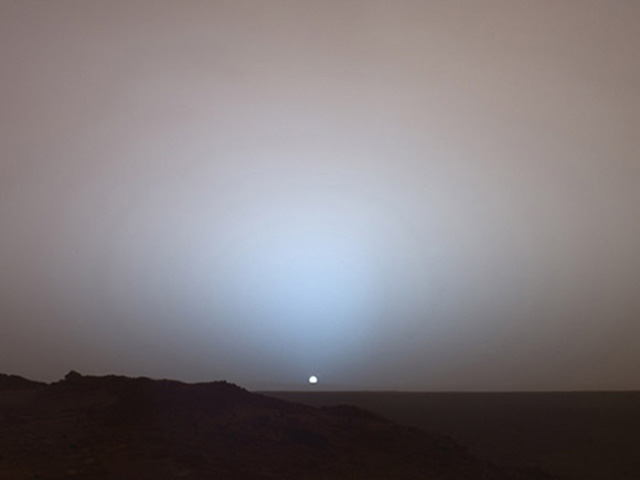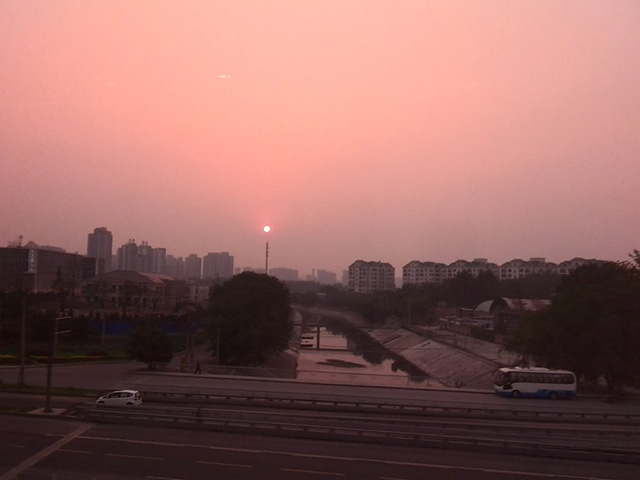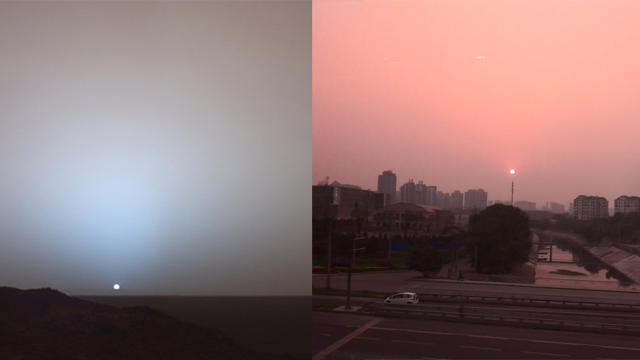On the left is the sunset as seen from Mars. On the right is the same view from Beijing. Were it not for the latter’s urban setting, you might not be able to tell the difference. Crazy, right? Fortunately, science can explain why.
Joe Hanson is PhD biologist brain behind PBS’s It’s OK to be Smart. He spelled out the phenomenon to Gizmodo:
Martian dust is a risk to future human exploration there. Minerals like gypsum in Mars dust could have the same effect as the buildup that harms coalminers’ lungs, COPD and things like that. Of course, we wouldn’t be outside breathing it in directly, right? The dust is a risk to spacesuits and settlements, too. The Apollo missions taught us that spacesuits really love to get clogged up with dust. Because it’s been rolling around in the Martian atmosphere for millions of years, that dust is buzzing with static charge, so it REALLY sticks to stuff like air filters. That could be dangerous, since breathing is kind of an Achilles’ Heel for us.
The extra-small size of those Martian dust particles is actually why the sunset there appears slightly blue in that photo. On earth, our atmospheric gases scatter blue and violet light as it travels through the atmosphere (which is why our sunsets are red and our sky is blue).

And what about Beijing? Hanson says:
Beijing is a different story. Chemical pollutants from car exhaust and burning fossil fuels are converted to nasty stuff like sulfur dioxide gas, which can turn into an aerosol made of sulfuric acid (hello, acid rain!). Pretty nasty. It’s those aerosols, of various sizes, that scatter the light in Beijing (and LA, and Mexico City). You’ll notice that Beijing’s sunset is redder. Sunsets on Earth are naturally red-orange-yellow (they don’t need pollution to be pretty, contrary to popular belief), but those aerosols filter our even more of the orange light, intensifying the red. Larger aerosols and dust from regular sandstorms that hit Beijing add to the general “haze” because big sand grains just scatter everything, adding a white glow to the sunset.
Incidentally, the Chinese government loves to blame this stuff on sandstorms, even though it’s mostly pollution.

Ultimately, the reason both sunsets look so hazy is the result of the same physics resulting in two different experiences. But you wouldn’t want to breathe the air in either place. Thanks Joe!
Joe Hanson is the host and writer of PBS Digital Studios’ science YouTube series It’s OK To Be Smart. You can follow him on Twitter here. You can also find him on Tumblr.
